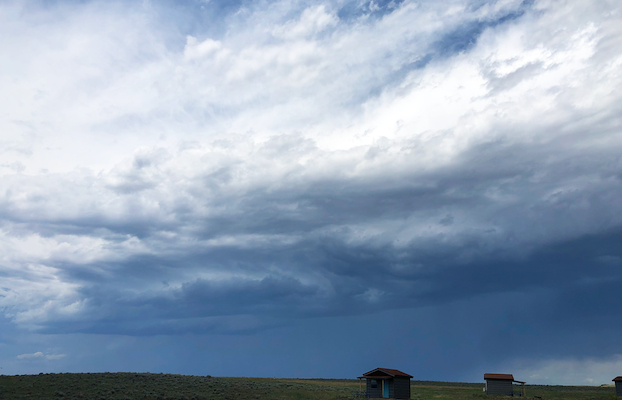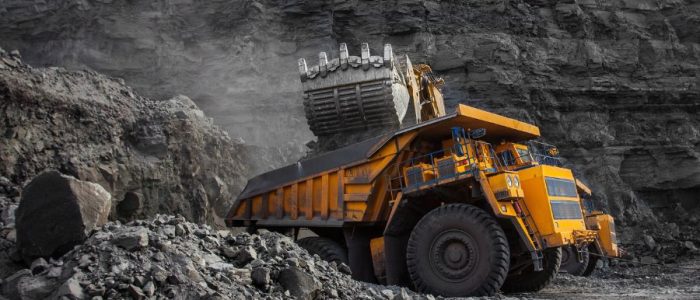
Climate & Energy
Fossil Fuels

Coal
MEIC works vigorously to reduce the use of dirty coal in Montana and implement a thoughtful transition to renewable and clean energy sources. Our coal program works to address all parts of the coal cycle, from mining and transportation to burning and disposal. Coal is a major industrial polluter of air toxins and greenhouse gases, damaging our water quality during mining and putting undue strain on Montana communities as the volume of coal train traffic crossing the state and our communities continues. Read more about coal in Montana.
Coal-Fired Power Plants
The Colstrip coal-fired power plant is one of the largest coal plants west of the Mississippi River, and each year it is among the leading sources of greenhouse gas emissions and air toxins in the nation. The plant consists of two remaining units. Two units were closed in early 2020 because of economics (a 2016 agreement MEIC struck with the plant owners required closure of those units by mid-2022). The two larger units have no closure date, but most of the owners will be financially ready to close the plant by 2025. Four of the six owners are utilities in Washington and Oregon. NorthWestern Energy is Montana’s only electric utility that has an ownership interest in the plant. NorthWestern owns 30% of unit 4, but is seeking to substantially increase that share by 2026. Leaking coal ash ponds present another challenge.
Coal Mining
About 25% of the nation’s recoverable coal reserves are located in Montana. Coal mining puts land and water resources at risk. Coal mine reclamation is a significant challenge in Montana. Mining companies do not reclaim lands concurrently with mining which raises the issue of whether the reclamation bonds are adequate. As groundwater moves through reclaimed mines, it becomes contaminated with a multitude of previously unavailable chemicals and toxins. This contamination can appear in surface water, in the uptake of contaminants in vegetation, and in wells. Because coal mining companies are unable to effectively deal with these water quality problems, as well as the problems mines cause with water availability, no land mined after the passage of the Montana Strip and Underground Mine Reclamation Act has ever had its bond fully released. Coal mining in Montana has been declining since about 2014, but companies like Signal Peak Energy persist in advocating for expanding operations.
Coal Exports
As demand for coal in the United States slowly but steadily wanes, coal mining companies have attempted to export coal to Asia to maintain their profit levels. In recent years, all proposals to build coal export terminals on the west coast have failed based upon Indigenous rights, water quality, and community impacts.
Oil & Gas
MEIC is working diligently to protect our air, water, and climate from the negative impacts of oil and gas development, burning, vehicle use, and use in homes and businesses. Development of oil and gas in Montana threatens clean air and climate through unchecked emissions. Development of oil and gas also threatens clean water as a result of the hydraulic fracturing process. MEIC has a long history of working to address environmental issues from oil and gas development in Montana, from coal bed methane development to the current problems associated with the development and use of oil and gas in buildings and vehicles.
Clean and healthful. It's your right, our mission.
Climate Change in Montana
MEIC feels the urgency of addressing the significant threat of climate change and has dedicated the majority of resources within our organization towards stopping the pollution that causes climate change.
Human-caused global warming through the release of carbon dioxide (CO₂) and methane represents a clear and present threat to our natural environment and human civilization that needs to be addressed immediately. The ramifications of a warming climate are pervasive, largely irreversible, and disproportionately harmful to low income and communities of color. Temperatures will continue to increase, sea levels will continue to rise, and the occurrence of extreme weather events will become more frequent without considerate, cohesive action. Natural systems will be permanently altered and disrupted, species will go extinct, and our earth will be forever altered. Montana has and will continue to feel the effects of a warmer climate in ways that will affect our natural environment and outdoor heritage. MEIC is committed to preventing climate changing pollution at the source and helping the state move towards a clean energy system that is habitable and equitable for all life dependent upon our climate.
Economics
Climate change is one of the greatest threats to Montana’s economy and way of life.
FarmConnect Montana reported in 2024 that climate change could cost Montana’s agriculture industry more than 9,500 jobs and more than $181 million dollars per year in labor earnings by mid-century.
Meanwhile, the Montana Wildlife Federation reported in 2023 climate change could cost the state’s outdoor economy 8,800 outdoor recreation jobs, and a staggering $263 million loss in labor earnings by mid-century due to stream closures, lost hunting opportunities, wildfires, and reduced snowpack.
In 2017, more than 1 million acres burned across Montana in wildfires, causing the state legislature to be called into special session to deal with the enormous firefighting costs.
Impacts
The Montana Climate Assessment was produced in 2017 after two years of intensive effort by scientists at Montana State University and University of Montana. The assessment explains the major impacts of climate change observed in Montana in recent decades and projected into the future.
Some major findings include:
- “Montana is projected to continue to warm in all geographic locations, seasons, and under all emission scenarios throughout the 21st century.”
- “Earlier onset of snowmelt and spring runoff will reduce late-summer water availability in snowmelt-dominated watersheds.”
- “An increase in fire risk (i.e., probability of occurrence)—including an increase in size and possible frequency and/or severity (i.e., tree mortality)—is expected in the coming century as a result of a) prolonged fire seasons due to increased temperatures, and b) increased fuel loads from past fire suppression.”
Clean Energy
Renewable Energy & Storage
MEIC plays an active role in promoting Montana clean energy projects and policies. Montana has an abundance of clean, renewable energy resources such as wind, solar, energy efficiency, small hydro, and low-emission biomass. In fact, Montana boasts approximately 700,000 megawatts of wind energy potential but only has about 700 installed. That is just 0.1% of our potential! Much more can and should be done to meet Montana and the region’s energy needs with our clean, reliable, and affordable resources. They are the keys to a sustainable energy future and are much more attainable than nuclear energy.
MEIC promotes renewable energy usage by:
- Fighting for clean energy at the Montana Legislature;
- Fighting for clean energy at the Montana Public Service Commission;
- Ensuring utilities fairly evaluate Montana’s clean energy resources;
- Fighting for transmission access: the linchpin to clean energy in the region.
Energy Efficiency
Energy efficiency means getting more out of the energy we already use. It’s the least expensive, most reliable, and cleanest energy resources available. Although energy efficiency is not always thought of as an energy resource, it is abundantly available and has great potential in Montana and the region. In fact, the Northwest Power and Conservation Council, a regional energy-planning agency, has determined that energy efficiency and conservation can meet 85% of the Northwest’s increasing energy needs over the next 20 years.
MEIC promotes energy efficiency by:
- Adoption of energy efficient building and energy codes;
- Protecting the Universal System Benefit program;
- Pressuring utilities and decision-makers to prioritize energy efficiency programs.
Clean and healthful. It's your right, our mission.
Utilities & Transmission Lines
Utilities play a critical role in the movement toward a clean energy future. Some progressive utilities around the county are going above and beyond minimum legal requirements to secure cheap, clean energy for their customers. Others are regressive, fighting against anything that might result in more clean energy or energy efficiency. Unfortunately, Montana’s largest utility, NorthWestern Energy, has been and continues to be in the latter category. Diligent watchdogging and strategic actions are continuously necessary to make sure Montana does not go backward on clean energy.
Transmission: The Linchpin to Clean Energy in the Region
MEIC helps increase Montana’s renewable energy access transmission lines by:
- Pushing transmission system owners, such as the Bonneville Power Administration and others, to upgrade existing facilities to allow for more Montana clean energy exports.
- Intervening in administrative proceedings to make sure Montana renewable energy is charged fair rates for use of transmission lines.
- When appropriate, supporting the construction of new transmission lines.
NorthWestern Energy
MEIC pushes Montana’s utilities to move toward a clean energy future by:
- Participating in NorthWestern Energy’s long-term planning process advisory committee and providing comments to the PSC on the plan.
- Monitoring and countering the actions of utilities to hinder our clean energy future at the Montana Legislature, Public Service Commission, and in other legal and administrative forums.
- Monitoring and strategically participating in legal and administrative processes in other states to make sure Montana’s clean energy resources are fairly evaluated.
Stay Connected
P: (406) 443-2520
E: meic@meic.org
324 Fuller Ave, #C-8
Helena, MT 59601
Mailing addresses:
P.O. Box 1184, Helena, MT, 59624
225 W. Front, Missoula, MT, 59802

